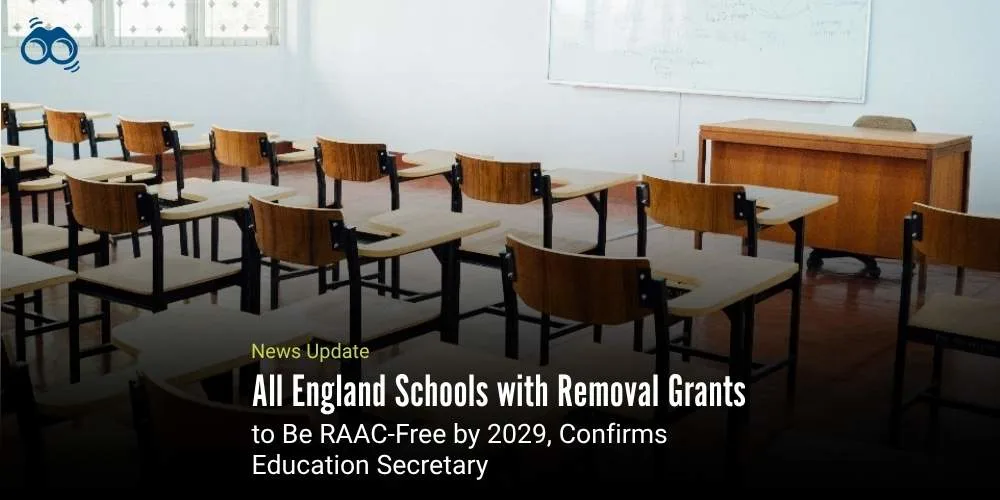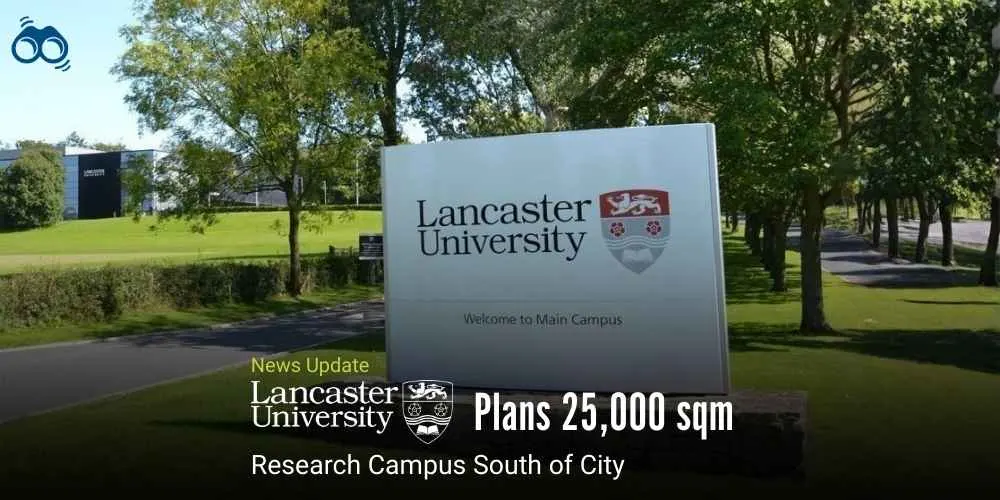Education Secretary Sets Timeline for RAAC Removal and School Rebuilding Nationwide
RAAC Crisis Triggers £38 Billion Investment in UK School Infrastructure
RAAC-related building failure was reported by the House of Lords Library, according to which at least three schools experienced sudden roof collapses in 2023. This incident underscored the urgent need for intervention to provide UK students a safe learning environment, much-needed education reform and public safety. The Secretary for Education has sworn that every publicly funded school and college in England that has received funding to eliminate Reinforced Autoclaved Aerated Concrete (RAAC) from its buildings will be free of it by the end of parliament. It is part of a whole education policy in the UK aimed at increasing the safety of all schools and instilling more public confidence in the education estate.
Bridget Phillipson from the UK Department for Education outlined a fresh timeline to deal with the RAAC crisis, which has affected a small but significant number of schools. Surely, she said, the government has inherited a school infrastructure legacy that is in poor condition, but that legacy will not define what they will leave. It is instead about the provision of safe learning environments in England where no child would have their focus diverted from their education.
RAAC is a lightweight construction material that was commonly used during the period between the 1950s and the 1990s; it has recently been found to deteriorate with age, giving way to structural failure. The national interest in RAAC came about in June 2023 when over a hundred schools were ordered to close either partially or fully just days before the academic year began. Some pupils were back to distance learning, while others found themselves sent to temporary classrooms. The crisis raised immediate questions of public safety, as well as future policy for school infrastructure in the UK.
By this reckoning, of the 22,000 schools in England, RAAC has been identified as present in 237, about 1%. So far, RAAC has been taken out of a total of 62 institutions, while almost 50 are still under the repairs queue. The Department for Education has confirmed that all schools that received grants for the removal of RAAC will be made RAAC-free within this parliamentary term. This also includes 108 schools outside the rebuilding program, of which six already have alternative arrangements worked out.
In further evidence of the seriousness with which the present administration takes school safety, the government building schools program ($3 billion) has already scheduled reconstruction work on 123 RAAC-affected schools. More than half of these projects are currently underway. The Education Secretary said that this effort is not mere bricks and mortar-it is that real commitment to put children's education, their future, and the best start in life first. Then renewed focus would come after years of under-investment in the schools. In 2010, a £55 billion Building Schools for the Future program was cancelled by Education Secretary Michael Gove-a decision he said he regretted. To put this in perspective, the current Labour government aims to allocate £38 billion for capital investments during the next five years; this would push the Department for Education's capital spending to levels not reached since 2010-11, supporting long-term education reform and public safety.
As part of the ongoing scrutiny of parliament, Children and Families Minister, Josh MacAlister, will give oral evidence to the Education Select Committee on progress made in the repair of RAAC. His oral testimony, therefore, will help clarify how the Department for Education is ensuring school safety in the UK and fulfilling its promises of RAAC-free schools in England. Thus, the government's operational thinking has shifted from reactive crisis management to proactive planning. By removing RAAC and investing in modern, resilient infrastructure, the UK makes significant moves toward providing safe, future-ready education for its people.
Editor’s Note:
The commitment made by the UK government to ensure that RAAC is eradicated from all schools and colleges funded through grants by this parliament is, above all, a moral duty. The logical urgency behind this intervention is evidenced by at least three confirmed incidents of roof collapse due to RAAC in 2023, and in excess of 100 schools facing emergency closure. Although no injuries to students were reported as a result of the collapses, learning was undeniably disrupted, and families lived in anxiety over possible roof collapse. The current crisis has starkly revealed the ramifications of deferred maintenance and short-sighted planning within public infrastructure. While the £38 billion capital investment represents a necessary corrective measure, it also underscores the UK's significant decline since the 2010 cancellation of the £55 billion Building Schools for the Future programme. The ongoing rebuilding of 123 schools affected by RAAC, alongside repair work in nearly 50 more, signifies a shift from crisis management to strategic planning. However, this momentum must be sustained beyond the present parliamentary term. From a world perspective, the consequences are clear. Henceforth, in India, similar concerns regarding ageing school infrastructure are in the air, albeit not yet linked to RAAC. With over 1.5 million schools in the country, many of which are located in buildings over 30 years old, the absence of a national structural audit framework presents a significant void. For its own good, India needs to act now, before it faces its own version of the RAAC crisis. Regularly carried-out safety audits, ring-fencing infrastructure funding, and transparent reporting cannot be compromised.
Skoobuzz underscores that the UK's strategy for addressing risks like RAAC, acknowledging, mitigating, and building long-term resilience, provides a model. Safe learning environments are fundamental to public trust in education, and while removing RAAC is a step in the right direction, true change will occur when all children learn in safe buildings.
FAQs
1. What is RAAC, and why is it being removed from schools in England?
RAAC (Reinforced Autoclaved Aerated Concrete) is a lightweight building material used in UK schools between the 1950s and 1990s. It deteriorates over time and can lead to sudden structural failure, prompting urgent removal to ensure safe learning environments.
2. Which schools in England are affected by RAAC?
As of late 2024, RAAC was found in 237 schools and colleges across England, about 1% of the national education estate. Over 100 schools faced emergency closures in 2023 due to safety concerns.
3. How is the UK government making schools RAAC-free by 2029?
The Department for Education UK has pledged that all grant-funded schools and colleges will be RAAC-free by the end of this parliament. This includes 108 schools outside the rebuilding programme, with 62 removals completed and nearly 50 still under repair.
4. What funding is available for RAAC-affected schools in England?
The UK government has committed £38 billion in capital investment over five years, including a £3 billion rebuilding programme for 123 RAAC-affected schools, more than half of which are already under construction.
5. How is the Department for Education ensuring school safety in the UK?
The department has introduced a national removal and rebuilding strategy, prioritising safe learning environments, structural audits, and long-term infrastructure planning. Ministerial oversight includes regular updates to Parliament and public reporting.
6. Did any students get injured due to RAAC-related building failures?
No student injuries have been officially reported. However, three schools experienced roof collapses in 2023, leading to emergency closures and widespread disruption to learning.
7. Why was the RAAC crisis in UK schools not addressed earlier?
Although RAAC risks were known for years, the crisis escalated in June 2023 when sudden collapses forced school closures. The issue highlighted years of underinvestment and the cancellation of the £55 billion Building Schools for the Future programme in 2010.
8. What does this mean for education policy in the UK?
The RAAC crisis has triggered a shift in UK education policy towards proactive infrastructure reform, with renewed focus on public safety, school resilience, and long-term capital planning.
9. Are other countries facing similar school infrastructure issues?
Yes. Countries like India are also grappling with ageing school buildings. While RAAC is not a known issue there, the lack of national structural audits and safety protocols poses similar risks.
10. What lessons can India and other nations learn from the UK’s RAAC response?
Governments should prioritise regular safety audits, ring-fenced infrastructure funding, and transparent reporting. The UK’s model—swift closures, targeted investment, and parliamentary oversight—offers a blueprint for global education reform.














0 Comments (Please Login To Continue)